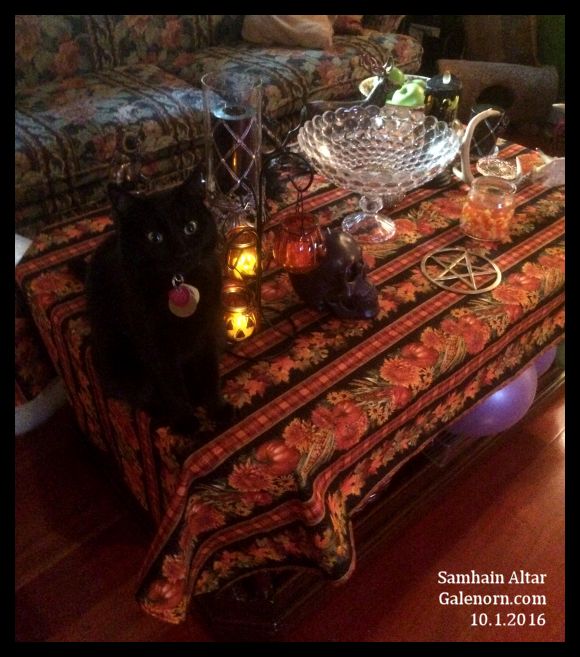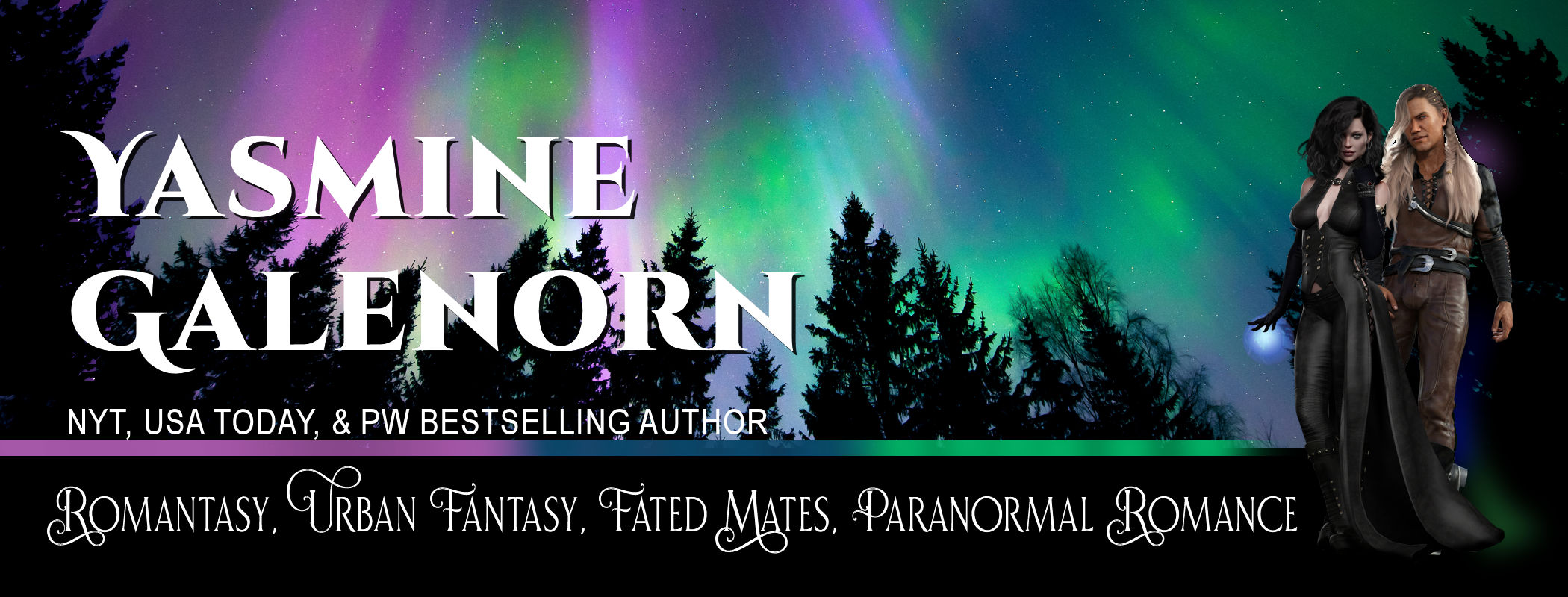Pumpkins, crisp leaves tinged with rust and bronze, a lace-work of frost kissing red-cheeked apples, ghostly mist rises in the shadowed night…Monday night is October 31st, the eve of Samhain, Festival of the Dead and we prepare to honor and remember our ancestors. Samhain is the third harvest, or meat harvest (Lughnasadh being the first harvest (of grain), and Mabon being the second harvest (of fruits).
Samhain (pronounced Sow-en), November 1, is a Celtic festival, generally celebrated the night before (which is where Halloween came from). The festival is focused on our links to our spiritual and physical ancestors, and recognizes death as a necessary part of life. During Samhain, the veils between the world of spirit and the world of mortals are at their thinnest. While the dead roam the earth all the time, during the weeks leading up to Samhain, it’s easiest to sense and communicate with them.
We decorate the Samhain altar with pumpkins and crystal skulls, jeweled spiders and a sickle, and a black hand-carved slate knife a friend made me goes on the altar, as well. We add pictures of the dead we wish to remember, a decanter of port wine, and a new black candle in a brass holder. We also drape silk garlands of autumn leaves around the altar. We add in Jack O’Lanterns, miniature pumpkins, apples, crisp autumn leaves, etc.. While I keep an ancestor altar up year-round, we do set up a special one for Samhain.

On the evening of October 31st, we set out the food for the dead. It’s customary to fix a plate for those you are remembering. Spare no expense here—if Uncle Joe loved chocolate creams, don’t buy him a candy bar, buy him chocolate creams. Of course, your bank account has something to say about this, but if you can afford to splurge, do so! The dead eat of the essence then the food is given back to the Earth. Every year my ‘family plate’ contains German pickles and onions for one of my sisters, a 3-Musketeers bar and coffee for my mother, and tea for one grandma, and bacon for another and so forth. We fill another plate with kitty kibbles for the cats we have known, loved and lost. Still another plate holds food for Sam’s family. Another plate holds food for our friends who have left us. Do NOT eat the food for the dead—it’s just not a good idea. If possible, the next day compost it, or give it back to the earth (if you can’t do this, then throw it out—just don’t eat it).
For our own dinner, I usually roast a ham, some red potatoes with rosemary for remembrance, we have some sort of vegetables with it—like green beans cooked with bacon—and I make a pumpkin pie. This year, due to my histamine issues and other allergies that people in our Coven have, I will be making lamb stew instead, and a butternut squash pie.
We cast the Circle and invoke the Lady of Ice and the Lord of Fire (the gods of Autumn/Death that we recognize and honor), asking that they gently pass by our home. Then, we call the rolls of the dead—listing out those we are remembering this year—human and beloved pets. We light a votive candle to light their way, and then hold a twenty minute silent meditation, during which we simply listen and think over the past we’ve had with these people/animals. We listen for messages from them, we acknowledge the impact they had on our lives. After the twenty minutes is up, I ring a bell and we talk over what we felt—and then we eat our own dinner. The dead are invited to stay and be with us during the night. The candle is allowed to burn itself out.
Contacting The Dead
Samhain is one of the few times I’m all that comfortable contacting the dead. I do not hold séances or call up spirits who don’t want to be disturbed—it interferes with their transition, and can
be disruptive to your psyche. Death is a transition, signaling movement from one realm to another and it’s not a good idea to encourage spirits to hang around our realm too long.
While some spirits involve themselves in our world as guides and mentors, others remain connected in more negative ways–through an unawareness of their condition (some don’t really understand that they’re dead), through fear or an unwillingness to release physical existence.
Spirits need to be free to move on and we can best help them by leaving them alone or, if we are experienced, by guiding them out of the limbo between life and death. During Samhain, we invite those whom we wish to remember to be part of our celebrations if they choose to join us, but we never coerce.
Samhain is also a great time for divination. Since the veils between worlds is thinnest then and we can easily see into the realms of spirit and faerie, we can also tap into potential paths for the future.
One caveat (and as a shamanic witch with over thirty-six years in the Craft I’m going to bluntly tell you that if you ignore this advice, you’re an idiot who is asking for trouble): do NOT use an Ouija board. I’ve heard from too many people who opened the door to entities they couldn’t get rid of without professional psychic help.
But there are many other forms of divination. Tarot Cards, Celtic Ogham Runes, the Norse Runes, crystal balls, magic mirrors—these are all good ways to contact the other side without leaving yourself fair game.
So yes, Samhain is approaching, and the veils are lifting, and the dead will be whispering in our ears.


I spend most of the year in the Southern hemisphere, and I don’t know when Beltane/Samhain/etc are celebrated Down Under. Does anyone know what those approximate dates might be? It just doesn’t seem logical that the veils would thin during the fertile spring season, but I haven’t been able to figure out what the corresponding dates would be.
Actually, holidays in the southern hemisphere tend to be switched around. When we celebrate Samhain, down in Australia, etc., they celebrate Beltane. Spring/Autumn equinoxes are switched, as are Winter/Summer Solstices, and Lughnasadh/Imbolc.
Thank you for sharing. What a lovely way to honor and remember.
Thank you for the post – but October 31st is a Monday this year!
Yeah, I realized my mistake and corrected it. LOL